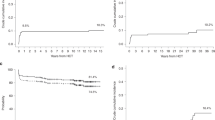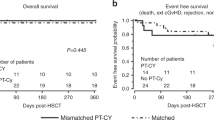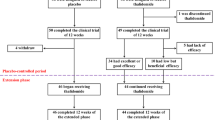Abstract
A 12-year-old girl with β-thalassemia hemoglobin E disease received a marrow transplant from her HLA-identical elder brother in July 1995. She had previously been treated by repeated blood transfusions. Conditioning included busulfan 16 mg/kg for 2 days and cyclophosphamide 120 mg/kg for 2 days. Cyclosporine was used for graft-versus-host disease prophylaxis. Spiking fevers occurred on days 6 and 11. Plasmodium falciparum parasites, both trophozoites and gametocytes, were found on the peripheral blood smear. Quinine 30 mg/kg three times a day for 7 days followed by a single dose of mefloquine 25 mg/kg was given. The fever subsided within 2 days and parasitemia cleared in 4 days. After transplant, the girl autologously reconstituted and was followed-up over 15 months.
This is a preview of subscription content, access via your institution
Access options
Subscribe to this journal
Receive 12 print issues and online access
$259.00 per year
only $21.58 per issue
Buy this article
- Purchase on Springer Link
- Instant access to full article PDF
Prices may be subject to local taxes which are calculated during checkout
Similar content being viewed by others
Author information
Authors and Affiliations
Rights and permissions
About this article
Cite this article
Tran, VB., Tran, VB. & Lin, KH. Malaria infection after allogeneic bone marrow transplantation in a child with thalassemia. Bone Marrow Transplant 19, 1259–1260 (1997). https://doi.org/10.1038/sj.bmt.1700822
Received:
Accepted:
Issue Date:
DOI: https://doi.org/10.1038/sj.bmt.1700822



